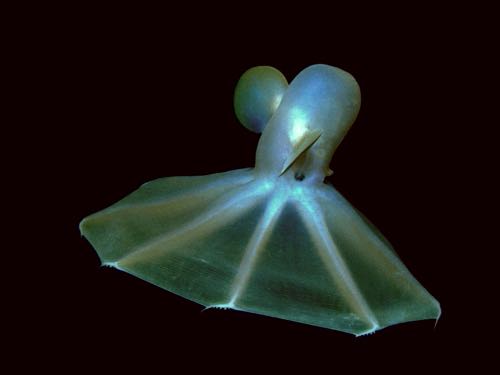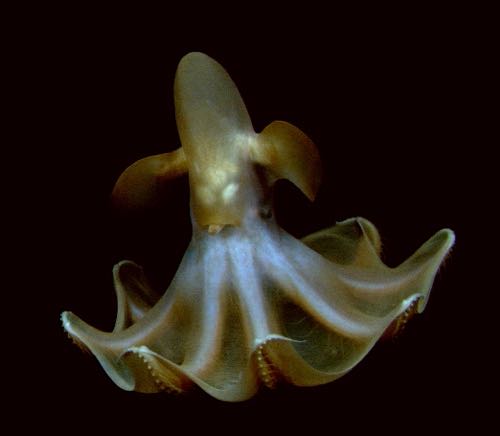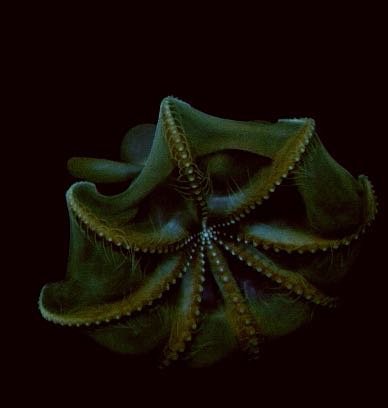Naming, identification, and classification of organisms often poses problems. Classification schemes may not always represent true organismal relationships, and because of limited samples or difficulty in collecting samples, duplicate names for the same organism sometimes occur. This week's Science Talk, presented by Dr. Dhugal Lindsay, was on the development and use of a DNA barcoding database to aid in identifying organisms. For example, when jellyfish or ctenophores are caught in nets, their soft bodies often leave little more than a blob of goo to be identified. Using DNA from this "blob" can show if that organism has already been identified even in the absence of distinguishing structural features. This can lead to a greater understanding of geographic distribution and life cycle strategies. During this talk, I also learned that there are both benthic and pelagic jellys and ctenophores. It's an amazing world out there with new things to see and learn each day!
The dumbo octopus (Grimpoteuthis spp.) shown in the photos below captivated us in front of the big screen during a recent ROV dive. This is classified in a family (Opisthoteuthidae) of deep-sea octopuses also known as umbrella octopuses. These photos are stills taken from a video color corrected and edited by Caitlin Bailey.



Question of the Day
Question: Why is the octopus shown above referred to as a "dumbo octopus"?
Answer From Yesterday's Q: "Arthropod" is loosely translated as "jointed foot". Arthropods are invertebrates with exoskeletons, jointed appendages, and segmented bodies. Insects, crustaceans, and arachnids are all examples of arthropods.


Comments